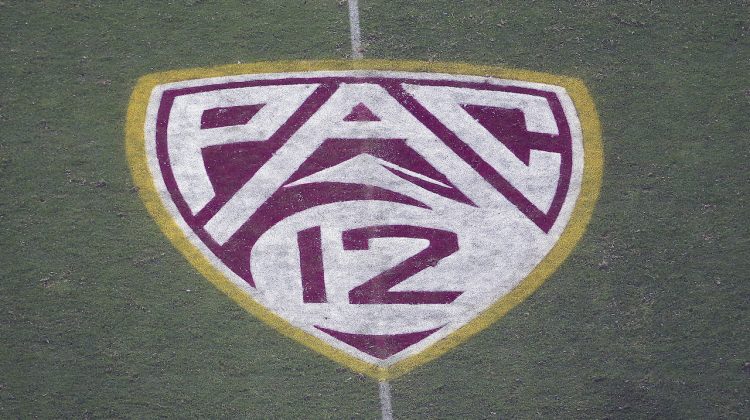Eleven months ago, the Pac-12 stood down. Believing itself stable and aligned, it passed on the opportunity to raid the teetering Big 12 following the announced departures of Texas and Oklahoma.
Now, 319 days later and reeling from the loss of USC and UCLA, the conference is vulnerable to a rebuilt, aggressive, potentially merciless Big 12.
But step back, assess the landscape from 50,000 feet, and it’s clear the conferences are far more alike than different:
— Both are preparing to enter the next phase of college football without their top brands.
— Both are far behind the enhanced versions of the SEC and Big Ten competitively and financially.
— Both have expiring media rights contracts (the Pac-12 in 2024, the Big 12 in 2025) that allow for changes to membership, structure and business models.
— Both are, like the ACC, scrambling for ways to secure spots in the expanded College Football Playoff (starting in 2026).
“The best thing (for the Pac-12) would be to figure out something with the Big 12 and negotiate with ESPN and create a channel,” said Patrick Crakes, who operates Crakes Media consulting and is a former Fox Sports senior vice president for programming, research and content strategy.
Three years ago, the Hotline examined the benefits of a strategic alliance between the Pac-12 and Big 12 that would make both stronger.
Bob Bowlsby, the Big 12 commissioner at the time, suggested a partnership was “not far-fetched,” but nothing materialized.
Then came COVID and the departures of Texas, Oklahoma, USC and UCLA.
Now, an alliance — or an outright merger — might be their best chance for relevance at the highest level in the sport’s next era.
The conferences are stronger together, not with one raiding the other but with each embracing a partnership that would add media value, warrant slots in the expanded CFP, marginalize the ACC, span every time zone and create a credible counterweight to the SEC and Big Ten.
“Both leagues would make more by working together than they would separately,” Crakes said.
“You can say, ‘We aren’t the Big Ten or SEC, but we have seven or eight high-quality teams, and we’re entitled to a couple spots in the CFP.’ Maybe you’re 75 percent of those two, but you could get two or three slots in the playoff.”
Crakes is not directly involved in the discussions involving the conferences and their media partners, but he knows many of the key players, including new Big 12 commissioner Brett Yormark.
His broad perspective is shaped by the confluence of four events that will catapult college football into its next chapter:
2024: The Pac-12 begins a new media contract cycle
2025: The Big 12 begins a new media contract cycle
2025: Notre Dame’s last year under the current NBC contract
2026: The first season on an expanded CFP
In other words, both the Pac-12 and Big 12 should move their chess pieces in a manner that not only creates media value for the next contract cycle but positions each for competitive relevance in the 12-team playoff.
The Pac-12 could hunker down with 10 or expand membership to create bulk. (If that’s the case, one option seems obvious. “They might conclude that San Diego State is too good to pass up,” Crakes said.)
The Big 12 could do the same and stick with the 12 schools committed for the post-Texas/Oklahoma era, a collection that includes incoming members Houston, UCF, Cincinnati and Brigham Young.
“I don’t think the Big 12 has enough on its own (to be the No. 3 conference),” Crakes said. (The ACC still has Clemson, Florida State and Miami.)
“You add the Pac-12 with Washington and Oregon and the big market of San Francisco, and Utah is really good, then you’re much stronger together. You don’t catch the Big Ten and the SEC, but you can see them in the front windshield if you do that.”
Crakes is aware of the media reports indicating the Big 12 might attempt to add the Four Corners schools (Arizona, ASU, Colorado and Utah) — a move that would add heft but not significant new media revenue.
And in that scenario, Washington and Oregon might feel compelled to come along, thereby giving the Big 12 eight new members and decimating the Pac-12.
But Crakes believes that’s shortsighted, because it leaves out Cal and Stanford and the massive Bay Area media market.
“If you’re the Big 12 and you raid the Pac-12 for those six schools,” he said, “maybe you get a 20 percent (revenue) bump. But maybe that gets to 30 percent if you bring the (Bay Area).”
Changes in media consumption have added immense value to the top brands in college football — the schools that drive ratings and command primetime slots on over-the-air networks. But market size still factors into valuation because of retransmission fees (for broadcast) and subscribers (for cable).
“The Bay Area adds value,” Crakes said. “Why would you say no to that?”
Based solely on the number of large media markets within its footprint, the Pac-12 has an advantage over the Big 12 even without USC and UCLA, particularly if it were to add San Diego State.
— Number of Pac-12 markets with at least one million homes in 2021, per Nielsen DMAs (with national ranking):
No. 6 Bay Area
No. 11 Phoenix
No. 12 Seattle
No. 16 Denver
No. 21 Portland
No. 27 San Diego
No. 30 Salt Lake City
— Number of Big 12 markets with at least one million homes (with national ranking):
No. 5 Dallas
No. 8 Houston
No. 17 Orlando
No. 30 Salt Lake City
Instead of the Big 12 grabbing six or eight Pac-12 schools or the Pac-12 churning forward alone, why not work together to create a super-conference that would include 10 of the top 30 markets and eight teams ranked in the final AP top-25 poll of the 2021 season.
“There are lots of non-strategic football brands in the Big Ten and SEC,” Crakes said.
“If you can get enough strategic brands together in the new combined conference, you’ve got something to offer media companies, distributors and advertisers. You get enough top-25 matchups in a given year, and you’d be OK.
The specifics of governance and structure (full-on merger or formal scheduling alliance) would take not only a commitment by each league but also ESPN, which could operate the combined linear network and own the digital rights, as well.
But a partnership of 20 schools (or more) — not separate paths or a predatory move — would create the best strategic position for 2026 and beyond, when strength and stability will be defined by both media dollars and CFP slots.
To get there, patience is required.
If the Four Corners schools get antsy, for instance, they could leave long-haul value on the table.
“If the money doesn’t start to flow for another two years and you’re Arizona, for example, do you really need to decide to join the Big 12 right now? Really, do you?” Crakes said.
“The Pac-12 schools need to think about this before they act.”
Related posts:

(AP Photo/Ralph Freso, File)
Wilner Hotline – Friday Pac-12 Mailbag
. (AP Photo/Mark J. Terrill)
Wilner Hotline: Ten Need-To-Knows For Pac-12 Week Six
(AP Photo/Ralph Freso, File)
Wilner – Pac-12 collapse: Tracing the 12 strategic blunders that led to Doomsday Hotline mailbag: Detailing the Pac-12’s liabilities, the ‘Pac-2’ and the MW, future of the NW rivalries, CFP rules, Bay Area regret and more
Hotline mailbag: Detailing the Pac-12’s liabilities, the ‘Pac-2’ and the MW, future of the NW rivalries, CFP rules, Bay Area regret and more


